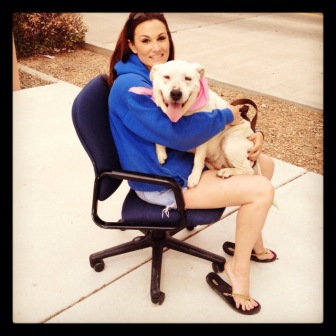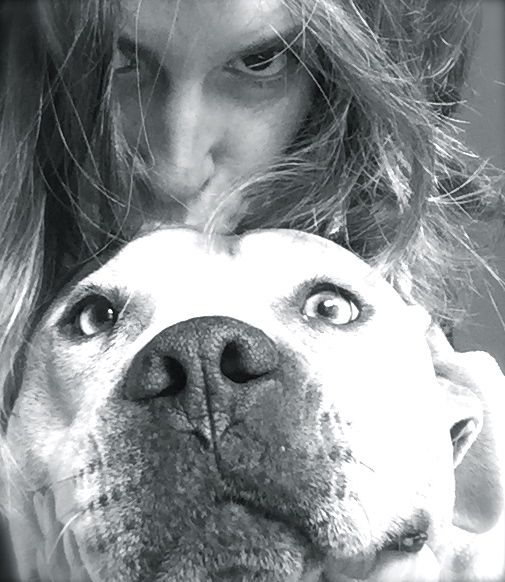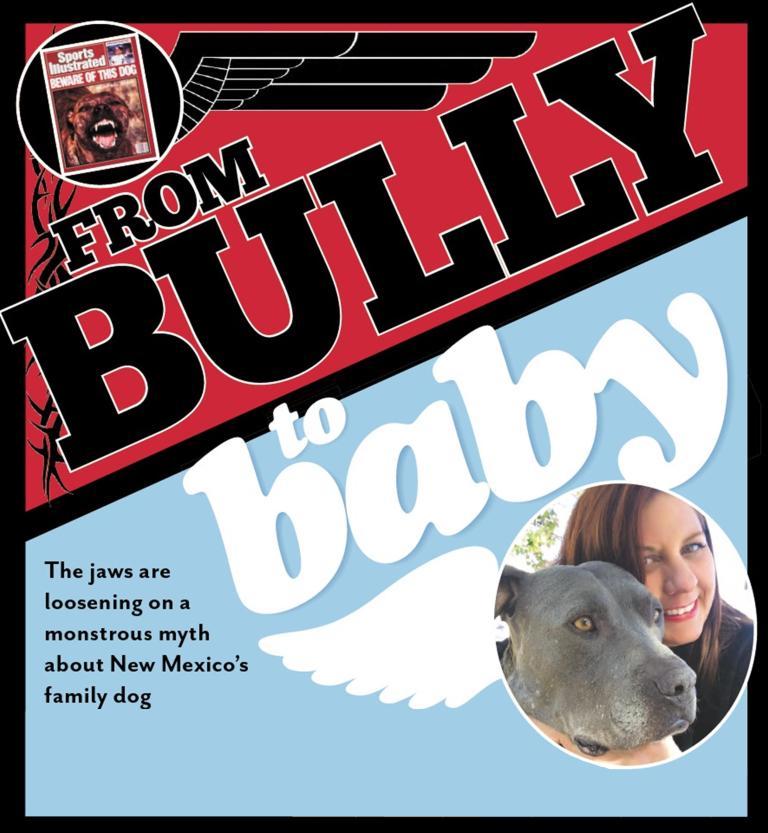IMAGINE
THAT THE CITY you live in votes to ban your dog and all that look like
her. Animal control knocks at the door and seizes your Princess, and you
have 30 days to go to court with a nonresident who will swear to adopt
her, or she will be put to death. Not possible in America, you say. Yet
this is precisely what has happened— unbeknownst to most people—in the
city of Denver over the last decade.
Desiree Arnold was one of those people. Her dog Coco was seized by
animal control in June 2008, and because it was the second time for the
dog — whom she did originally move out of the county, only to become
concerned about her care and bring her home — there would be no second
chances. Coco would be euthanized. Arnold sued the city, but as the case
dragged on, her dog began to fall apart. Every time she went to visit
the city shelter, Coco would whine and cry, wanting desperately to go
home. Heartbroken, Arnold could not keep watching her dog suffer. She
gave up the fight, and was handed her dog’s body in a garbage bag.
If you love your dog, you cannot watch her tell this story without
feeling crushed. The dog was sweet and gentle, as she explains in the
documentary Beyond the Myth—a loved member of the family. The city of
Denver has the nation’s most notorious ban on pit bulls, which has led
to the seizure of 1,900 dogs since 1989, of which 1,453 were put to
death. But the cruelest moment in its history came in 2005, when the
city successfully fought a statewide prohibition on laws banning certain
dog breeds. A notice appeared in the newspaper that Denver’s ban was
back in effect, and 30 days later, officers knocked on doors and carried
off pets to kill.

From where we sit in New Mexico, it seems upside down. This is Colorado we’re talking about, the state with such a shortage of adoptable animals, until recently it took in thousands of homeless animals from New Mexico every year.
Yet the fact is that such a cruel, senseless, draconian law could not have been enacted in Albuquerque—though legislators here have surely tried (most recently, State Sen. Sue Wilson Beffort of Bernalillo in 2012). Pit bulls are the third most popular breed of dog in New Mexico after Chihuahuas and Labrador Retrievers, according to this year’s annual survey by Banfield pet hospitals—and they live with families across the economic spectrum. “Some of our largest donors own multiple pit bulls, and these are not low-income folks,” says Peggy Weigle, director of Animal Humane New Mexico. “People love their pit bulls.” If our animal shelters are full of homeless pits, it is partly because they are so very popular; the Albuquerque city shelters also counted some 107 Chihuahuas in its latest inventory.
There is no denying, however, that “pitties” take longer to get adopted and are euthanized at nearly three times the rate of Chihuahuas—and not only because large dogs are harder to place. Even in New Mexico, pit bulls have an image problem, no matter how many people love them and swear that they make great family pets. Experts may testify that breed bans are unscientific, illogical, and ineffective—as they have done for a decade—but they are drowned out by the impact of sensational mauling stories and politicians capitalizing on public fear. It has proved simple enough to get large numbers of people to believe that Muslims “hate freedom,” young black men are violent, and blondes are dumb. Why should it be any different for the all-American dog?
“THE AMERICAN DOG” is what the pit bull is labeled in a beautifully written story in the August 2014 Esquire magazine by Tom Junod, who pens a long meditation on the strange public relations gap between his cute, silly family dog and the crimes committed elsewhere by dogs that bear a superficial resemblance to him.
“Pit bull,” he reminds us, is not even a breed of dog. The vast majority of dogs described this way are mixed breeds—in Albuquerque the mix is often Labrador Retriever—or belong to one of two dozen breeds that have been called pit bulls in various times and places. What marks these dogs is a certain look, now affectionately known as “blockhead.”
Square-jawed, muscular, and squat, so-called pit bulls cannot be identified by DNA testing. There are, in other words, no pit bull genes, meaning the 47-point checklist that Miami animal control uses to determine if a dog is at least half pit bull would be laughable if it were not actually used to condemn people’s dogs. As Junod put it, any dog crossed with a pit bull is a pit bull, and if that dog bites, it’s always the pit bull part that bit.

Jeff
Nichols, an Albuquerque veterinarian and well-known animal behavior
expert, says there is no heritable trait such as “viciousness.” “The
genetic issue is very complex,” he told an audience during Pitbull
Awareness Week events in November. It is impossible to predict traits
even in the most rigidly controlled breed lines— which is why so many
dogs bred to fight end up rejected and killed. “It’s remarkably complex,
and to reduce it to breed is a ridiculous oversimplification.”
Yet as recently as June 2014, no less a self-appointed authority than
Time magazine ran an article called “The Problem with Pitbulls,” which
resuscitated the tired rumors debunked years hence. Time later had to
publish a correction stating that the horrifying attack at the center of
author Charlotte Alter’s complaint— the mauling of a 3-year-old by a
pit bull—apparently never took place.
IF THERE IS a
viciousness that adheres to pit bulls, it is the circularity of the
argument about their breeding. Three recognized breeds—American
Staffordshire Terrier, American Pit Bull Terrier, and Staffordshire Bull
Terrier— were indeed raised to fight through selection of such traits
as prey drive, pain tolerance, “gameness,” and bite inhibition toward
humans.
This reputation made the dogs popular in the criminal underworld,
where they were sloppily bred in pursuit of the muscular, “bad-ass” look
that made them even more popular with the wrong kind of people. These
poor dogs were often abused and neglected, chained up and encouraged to
be aggressive. Coinciding with the rise of the Mexican drug cartels and
crack cocaine epidemic of the 1980s and ’90s, the dogs made an
irresistible poster child for America’s social ills.
The popular media, always drawn to simple ideas and slogans, clamped
its jaws on the pit bull attack genre, perpetuating such strange rumors
as the “locking jaw” theory, or the idea that pit bulls could bite with
greater force than alligators. Politicians came clamoring behind with
demands to ban these dangerous dogs, although dogs have bitten and
mauled humans since the beginning of time.
By the year 2000, breed-specific legislation was being proposed or in
place in 38 states, according to a 2001 report by the Michigan State
University Animal Legal & Historical Center. Banned breeds included
Rottweilers, Chow Chows, German Shepherds, Doberman Pinschers, Mastiffs, and American Bull-dogs, among others.

“In the 1980s and ’90s, it was a very popular thing to do,” says Lou
Guyton, senior director of community initiatives at the ASPCA, noting
that many municipalities have since backed off as the bans failed to
prevent dog attacks. And no wonder—according to Nichols, bite reports
cite many different breeds, most often Labradors, Jack Russell Terriers,
and Cocker Spaniels, all hugely popular dogs.
Unfortunately, pit bulls still find themselves caught in a
self-fulfilling cycle of poverty, abuse, and unsociable behavior that
continues to be supported by discrimination from homeowner associations
and insurance companies. It is not, in fact, any retreat from
scapegoating that accounts for the dogs’ rehabilitation. Rather, it is
the rise of a different voice in the dangerous dog debate, one that is
female, educated, media-savvy, persistent— and a direct challenge to the
image of the dogs as a hyper-macho accessory to drug lords and
gangsters.
MARE ISRAEL WAS
probably the first dog-lover in New Mexico to notice and act on a whole
category of dogs being put to death as a matter of course. In 1999 her
son brought home a dog that was “so ugly it was cute,” she recalls, “and
I asked what it was. When he told me, I said, ‘Are you crazy?!’”
But Israel had done a master’s thesis on manipulation by the media, so
she set out to learn everything she could about these dogs whose image
did not match her reality. After she got a second one— a big black male
named Jake—she consulted with a behaviorist about problems the dog was
having with her wolf hybrid. “They told me I had to put the dog down
because he was a pit bull. I had nine dogs, and they said he would hurt
every dog I had and hurt my mother,” Israel says incredulously.
“It made me so mad,” she said, because Jake was a dog who had been
poked in the eye by babies and done nothing but wiggle happily. The
shelters told her that they had no choice but to kill pit bulls because
good adopters could not be found for them.
“I said, really? Well watch this.” Israel went on to found
Pet-a-Bulls, which has pulled unadoptable dogs from shelters for 15
years and placed them in “wonderful homes,” Israel says: “people at
Sandia, Intel, doctors, lawyers.” She feels the group helped change the
perception that pit bulls belonged with “the kind of people who didn’t
have the resources to care for them,” as she puts it.
Rena Distasio cites a similar wakeup call that led to the founding of
Responsibly Adopting Albuquerque Pitbulls (RAAP). As a volunteer dog
walker for the Albuquerque shelters, she learned about an entire
building full of “big black scary dogs” that were never walked and bound
to be euthanized—pit bulls.
“I had been around the breed my whole life, and decided those dogs
needed enrichment too,” says Distasio. She and Jennifer Conklin founded
their education and advocacy group in 2006 to help get some of those
dogs adopted.
It was a time when the animal rescue movement was coalescing
nationwide, thanks to the Internet and social media. New Mexicans Kassie
Brown, Rachel Starr, and Tiffany Truitt took a page from the success of
the Chicago-based group Pinups for Pitbulls, which published a popular
calendar of fetching models posing with their “bully breeds.” The three
pit bull owners founded The Babes and Bullies in Albuquerque in 2007.
Like the Chicago group, BNB goes out into the community doing
outreach, rather than sitting at tables handing out pamphlets, says
president Tarrah Hobbs. “When people see that we aren’t what they
pictured a pit bull owner to be, I think they’re more open to hearing
our experience with the breed.”
Dog trainer Maria Colbert, former vice-president of Babes and Bullies,
likens the soft approach—more carrot than stick—to what she learned in
sales about approaching people non-judgmentally and seeking common
ground.
The “pin-up” side of the message, she says, is really about marketing.
Women attract attention and help shift the image of pit bulls from
vicious killer to “big bad bully.” This also attracts a younger
generation of women to dog rescue, Colbert says.
PIT BULLS NOW routinely
appear at the sides of articulate women who stand ready to act as
“ambassadors” for the breed and defend against trespasses in the
politics of canine correctness. While the dog fighter tries to stay out
of sight, the Bully Babe is everywhere at public events, on social
media, handing out pamphlets, giving speeches, making documentaries,
writing press releases and letters to the editor.
Her message of the pit bull as ideal family pet and war hero may not
be as compelling as the “time bomb on legs” of 20 years ago. But in New
Mexico, at least, it has taken hold, thanks to constant attention to
rescuing the dogs’ image, as well as their lives.
“In the placement of our dogs, we’re very picky,” explains Angela
Stell, president of NMDog, which places a lot of pit bull type dogs
because of the type of community outreach work they do. “When we choose a
guardian for any one of our dogs, we expect them to be great advocates
for dogs. When we choose a guardian for one of our pitties, we also
expect them to be a great advocate for the breed.”
NMDog often requires adopters to attend basic obedience training,
avoid dog parks, and act responsibly to avoid contributing to a negative
stereotype. “It’s not everybody who can do that,” says Stell, “and
that’s why sometimes our pit bull type kiddos wait longer to find their
home.”
In the South Valley neighborhoods they canvass together on
anti-cruelty sweeps, nearly all the dogs helped by NMDog and the
Bernalillo County Sheriff’s Office are pit mixes, says Lt. Andi Taylor.
“People get them because they think it gives a personification of
toughness, so they try to make the dog tough,” adds Taylor, a pit bull
owner, “when they are actually the sweetest dogs who just want to please
their owners.”
The dogs proliferate, in other words, because they are easily
obtained, often unaltered, and basically have become the de facto street
dog.
INDEED, AT
Albuquerque’s three largest shelters—the municipal east and west side
shelters and nonprofit Animal Humane—pit bulls and Chihuahuas comprise
58 percent of all homeless dogs. Adopters come in both types, the
shelter directors say, those who definitely do or do not want a pit.
“It’s the in-betweens that we want to convince that it’s a really good
family pet,” says Barbara Bruin, director of Albuquerque Animal
Welfare. Income doesn’t have a lot to do with it, she says, but rather
how willing people are to believe the media.
With pit bulls among the top five favorite breeds in most states, why
would news outlets like Time persist with the idea that “the real
problem” is “pit bulls were bred to be violent”? Perhaps for the same
reason they persist in portraying certain racial or religious groups as
inherently violent, or certain sexual orientations as inherently
depraved—because it lets everyone else off the hook. While it has become
dangerous and even illegal to discriminate against humans, targeting
animals is no crime. They are legally property, to be seized and
destroyed like criminal booty—as they are in Denver.
Blaming pit bulls for the viciousness of human society helps us
“solve” intractable problems for which we all might otherwise share some
responsibility, like poverty, injustice, substance abuse, and a
cultural obsession with violence and revenge.
Animal protection groups now frequently link animal with human abuse,
tracing both to factors that lead children to grow up lacking empathy
for others. But there is nothing illogical or incongruent to a child
witnessing his first dog fight. It makes perfect sense in a society that
presents killing as entertainment, worships firepower, and loves
competition.
Someone is always the loser, any child will tell you, and it is the
one who is weakest. That’s why thousands of innocent animals who were
bred to look vicious must die to redeem humankind.

